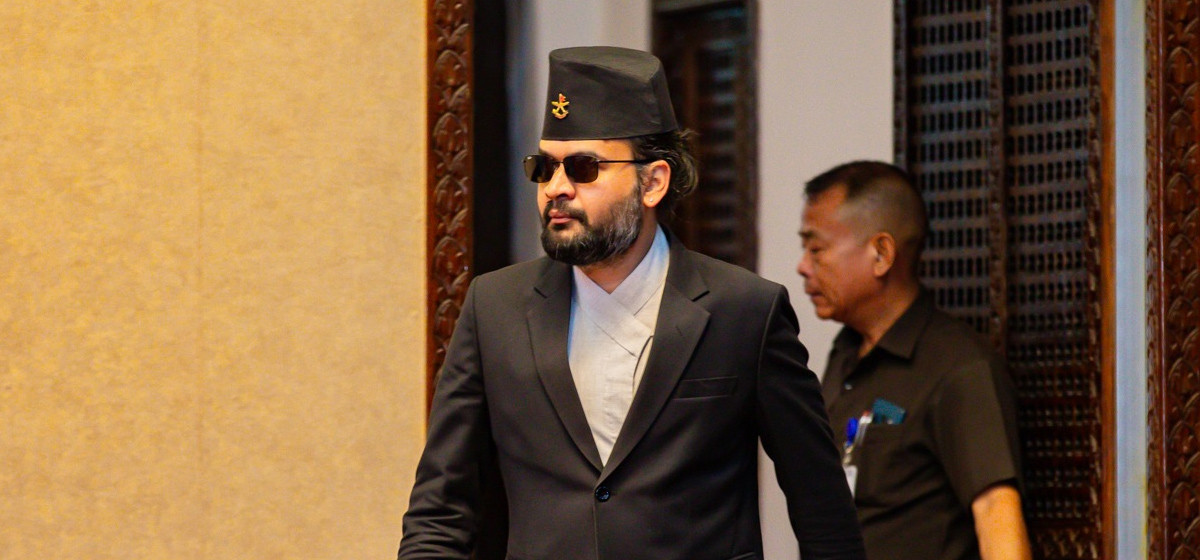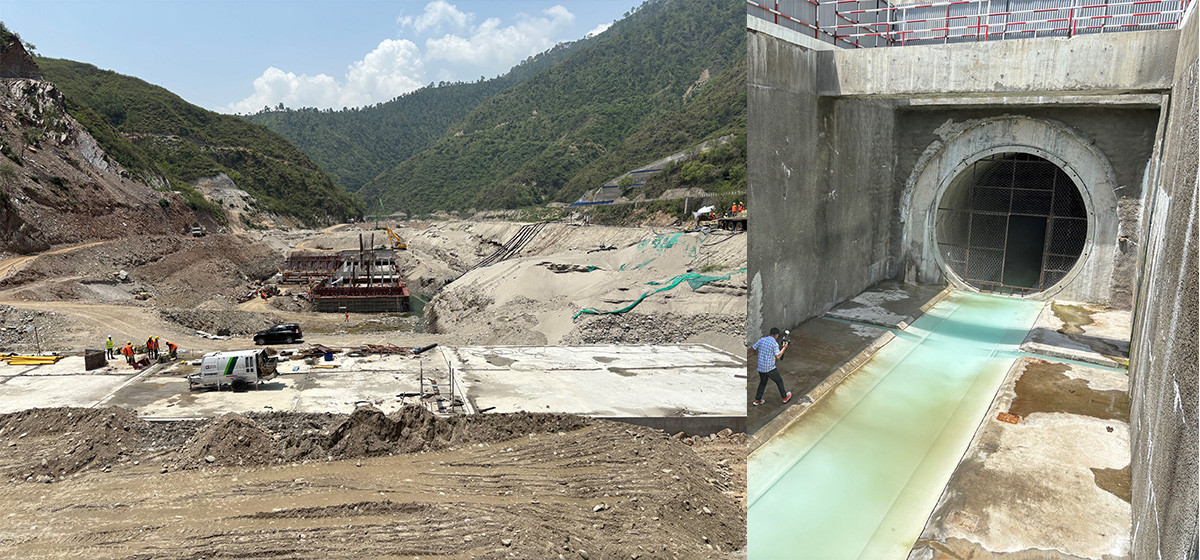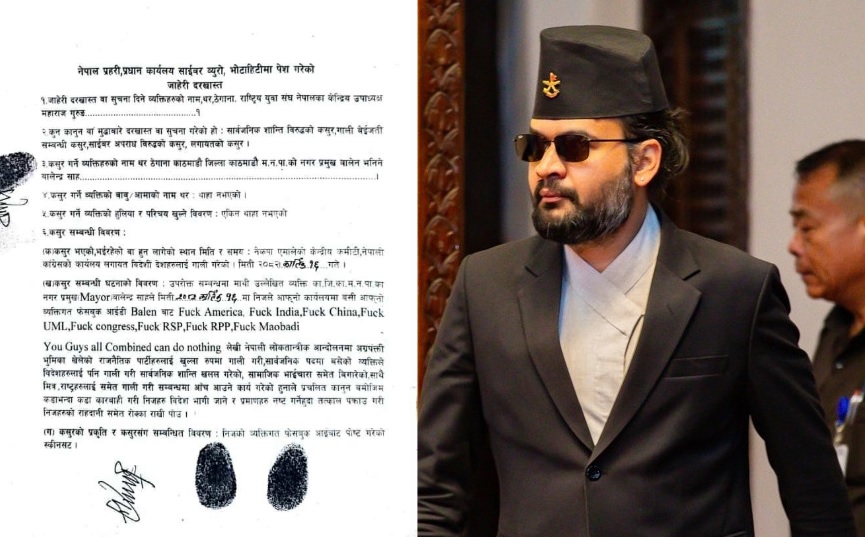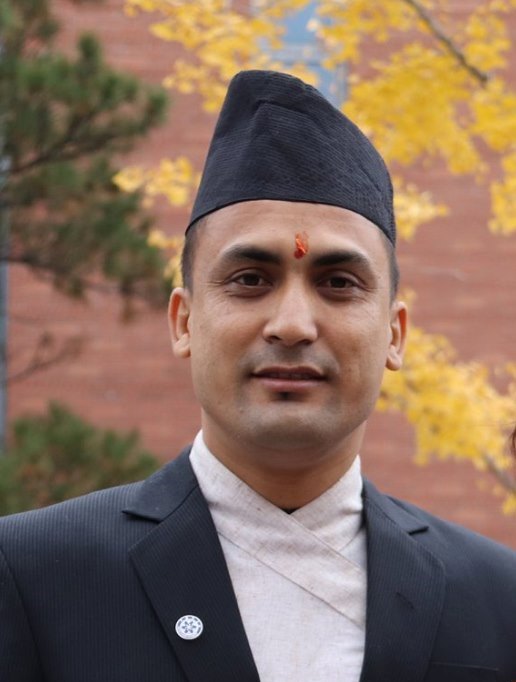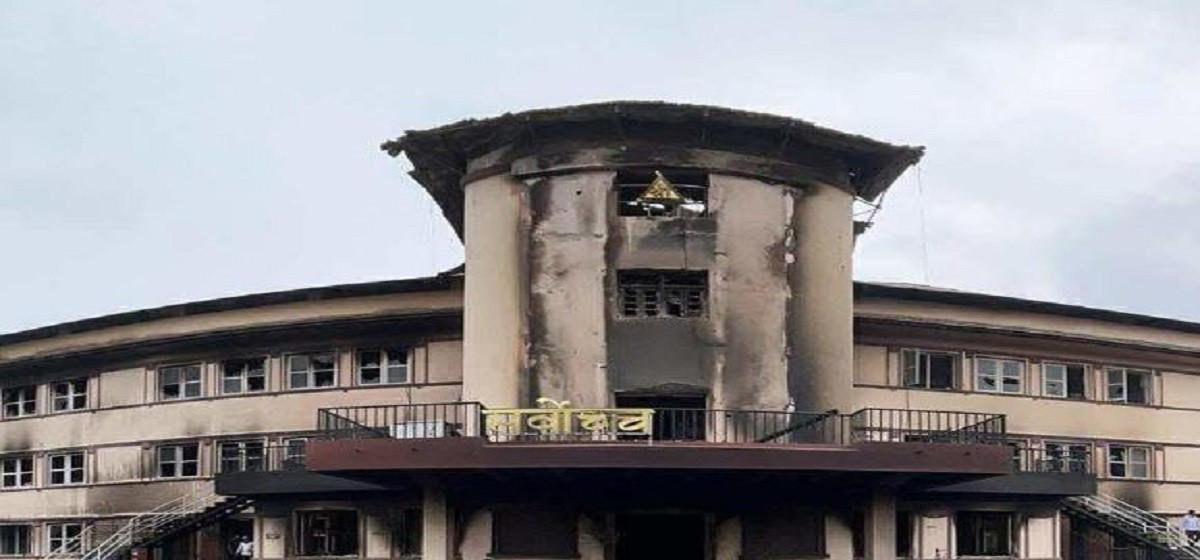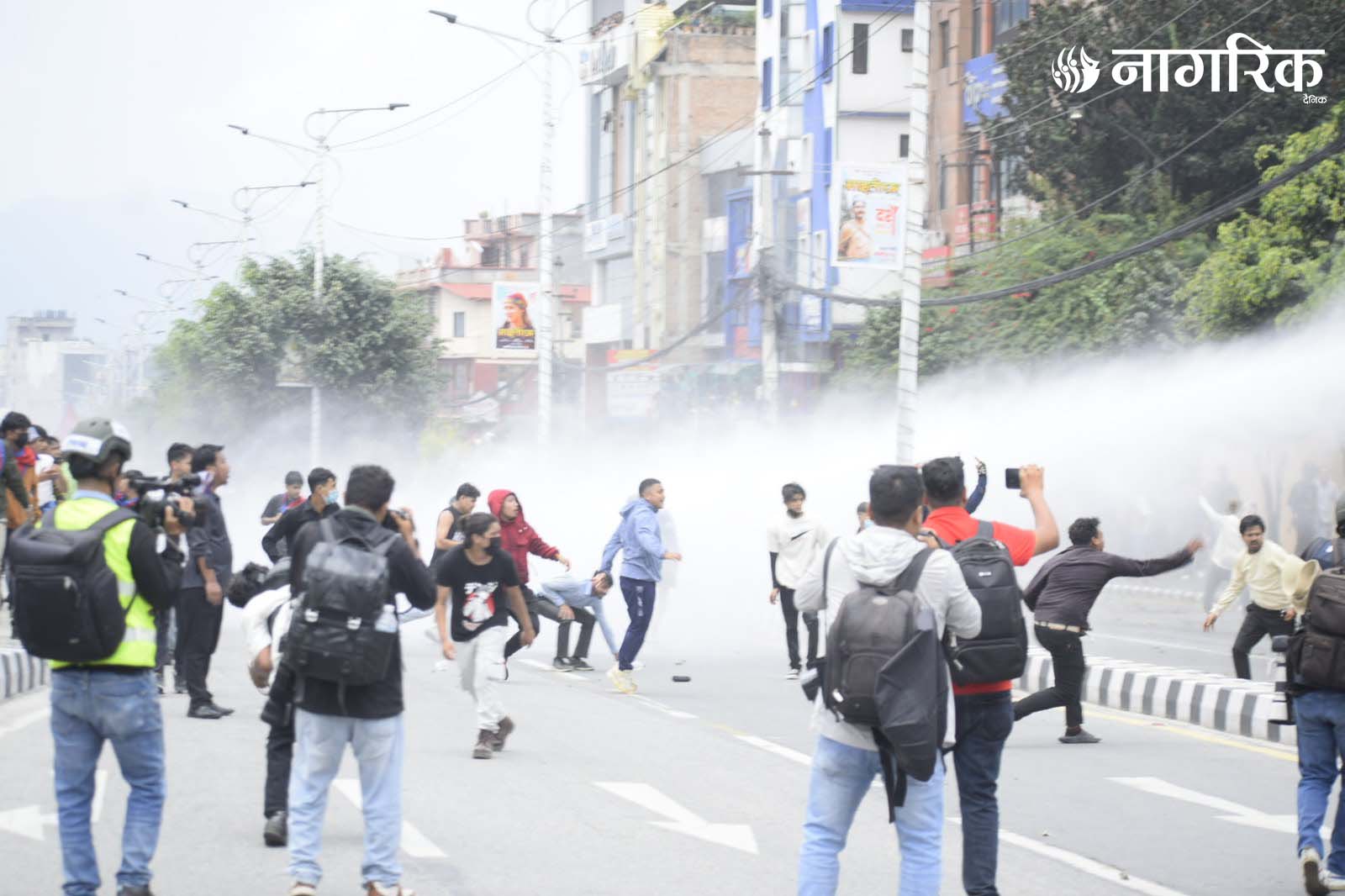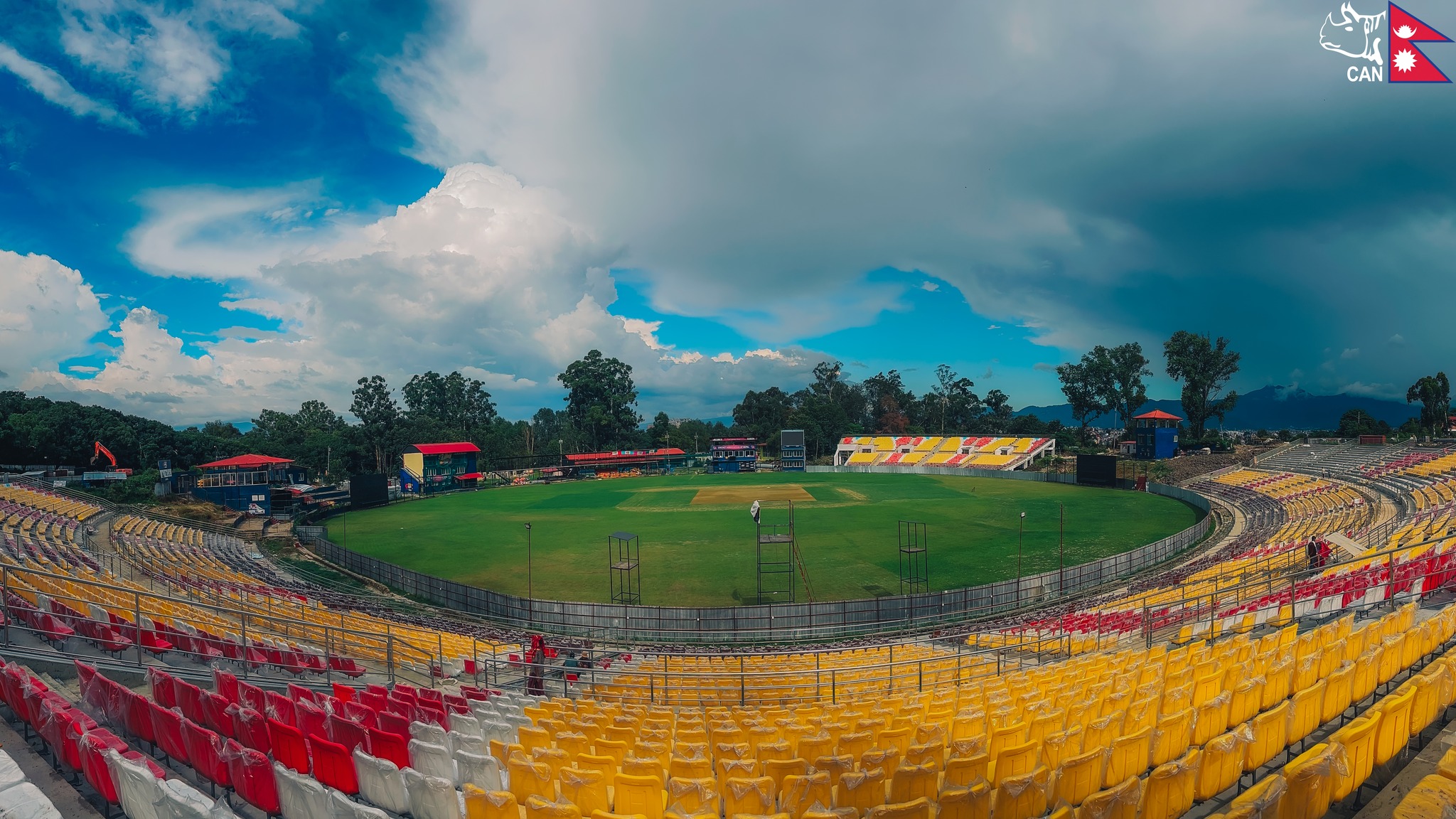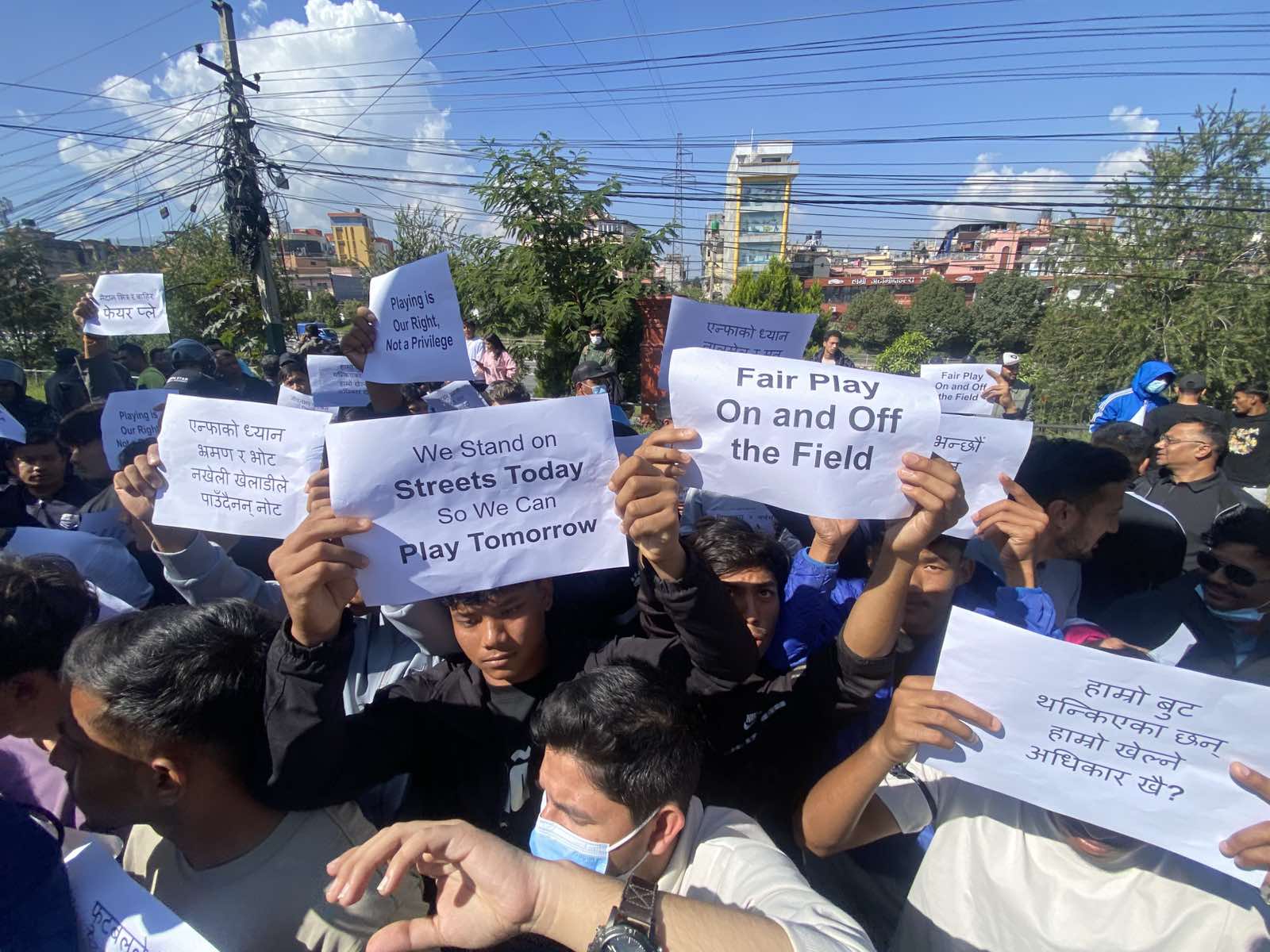Deepak Tuladhar is a man on a mission. For around eight years now, he has been requesting community and private schools in and around Kathmandu valley, in places like Banepa and Sindhupalchowk, to prepare a curriculum that teaches young students in and about their mother tongues. This comes under the campaign that he named ‘Newa Basti, Newa School’.
His reasoning behind this is simple. “We want to ensure that young children know how to read, write, and speak in their mother tongue,” he says. He first found the need to launch this campaign when he realized that more and more young children didn’t know anything about their own mother tongue. “I feared such a decline in speakers of the local languages would not be good for our identity,” he says.
Tuladhar, who is also a director at Model Newa English School at Durbarmarg, started by introducing Nepal Bhasa as a medium of teaching other subjects at his school. He says that the goal is not to shun Nepali and English languages in favor of the local language like Nepal Bhasa. Instead it was to teach them those languages along with a local language so that students can adapt and know their mother tongues. Along with his school, there are 10 other schools where he introduced such practice, and the results have been amazing.
“Students, teachers, and guardians have shown tremendous support towards our initiative,” he says, adding that learning the languages, Nepal Bhasa for example, has not been limited to the students of that ethnic background only. “Students of Tamang and Bahun ethnic backgrounds are also learning Nepal Bhasa, whereas we have a teacher, who is a Bahun, teaching the language to the students,” he says, adding, “In some places with many Tamang people, I’ve even been requesting the schools to teach Tamang language to the students,” he says.
Till now, around 120 schools have complied with his requests of teaching Nepal Bhasa and other local languages in the schools to the students, but unlike at his school, they teach a local language only as a subject.
‘The country should be developed by preserving nature, not by d...

However, one of the major signs of the decline in local languages is the fact that there are very few publications related to them. Publications – books or newspapers – in these languages are in less number and even rare. One might wonder if there are even products on these languages besides the scholarly journals. However, hope isn’t lost yet.
Uden Nhusayami, sub-editor of Sandhya Times, a 21 year old Nepal Bhasa daily, says that it is definitely difficult to sustain a local language newspaper in the present context when online media trumps all the others. On top of that, when it is a local language daily that has a considerably small readership, there are times when it is difficult to survive. But according to him, there is some support in the form of loyal readers.
“Rather than focusing on political news like the date for the promulgation of the constitution and other national news, we focus on local news,” he says. Their news are usually about the activities in the community, book launches, and community award programs, along with others that usually manage to grab the reader’s attention. He says that there are loyal readers who buy the paper for these kinds of news. Besides that, he thinks that the reason why they have managed to be in the market for this long is that people actually care about reading the news in Nepal Bhasa.
Also, every Friday, Sandhya Times brings out a special edition dedicated to entertainment and information. “We publish crosswords, guide on writing the script, and interesting small articles about animals and birds to appease the young readers,” he says, adding that Tuladhar’s campaign has helped their paper
further.
Not only for adult readers of this Nepal Bhasa paper, but Tuladhar’s campaign has even encouraged students in those schools where the campaign has been launched to read the paper, increasing the readership and the students’ knowledge of the language.
“The content we publish on the weekends is used by the teachers at the schools’ examinations where Tuladhar’s campaign has been adopted. The children have been instructed to read it because later they might have to give exams based on those texts,” he says.
As far as the publications are concerned, Nepal Bhasa has prolific writers who frequently present their works in the market, hence providing a lot of materials to study and read. Pawan Shakya, who mans a newspaper stand in Ason selling various publications in Nepal Bhasa, says that there has been a rise in the number of publications. “There are at least six weeklies, 10-12 dailies, and several magazines in NepalBhasa that I sell at my newsstand. Besides that, there are many books and fictional works in Nepal Bhasa, and there is absolutely no dearth of customers,” he says.
However, this is the tale of just one language in the valley. According to the 2011 census, the people of Nepal speak 123 different languages and very few of them are documented. To have people publish their creative works in these languages is a different question and issue altogether.
Dr. Tikaram Poudel, assistant professor at Kathmandu University, says that there are many languages that don’t have a script. “Language is any community’s heritage, and denotes their identity. Of late, acting on this thought, Central Department of Linguistics in Kathmandu has started to invest in the documentation of these languages for its preservation,” he says.
He says that many of these languages are being written and preserved in Devanagari script as they don’t have their own. “Many sounds are also reconsidered because it doesn’t match the script, but that hasn’t discouraged the linguists,” he says. He says that documentation of Puma language spoken in the East is almost over. “The department plans to publish a dictionary, which is a very good way to revitalize the language and spread further awareness about it,” he says.
Publishing a dictionary and grammar books of a language is a good way to ensure its preservation. Sajha Prakashan and Nepal Rajkiya Pragya Pratisthan, government publishing bodies, have been issuing a number of books in various languages over the years.
Books like Magar Bhasa (Dhut) Byakaran, Limbu Byakaran, Kewarat Shabdasangraha, and Baitadeli Bhashika among others by Nepal Rajkiya Pragya Pratisthan and a series of books acting like tutorials, like Bantawa Bhasa Sikaun, Tharu Bhasa Sikaun, and Chamling Bhasa Sikaun by Sajha Prakashan are just some of the examples of books promoting and trying to preserve local languages.
However, even these publication houses haven’t been able to continue on the path of publishing books of and about various local languages. Managing director of Sajha Prakashan, Dolendra Prasad Sharma, says that there has been no management of such works in the market. “Sajha Prakashan’s aim is to preserve and promote such languages. But in recent times, market for such books have declined, and the fund to publish them has also dwindled,” he says, adding that for the last two years, books in such titles haven’t been published.
He further adds that no more than 1,100 copies of these books are published, but even then a lot of them are lost on the dusty shelves of forgotten bookstores.
Maybe then it’s not the publishers and newspapers that have given up on the mother languages, but the speakers themselves, and the decline in their publication is more because of people’s mindsets. However, evidence suggests that with a little bit of help from the public, these publications can spring right back on their feet and contribute in the enrichment of the local languages because they are an important part of our identity and culture.
“If the paper doesn’t reach them on time, some customers call us and demand for it,” says Nhusayami, adding, “Once you start reading and writing in your mother tongue, you get addicted to it.” The next time you go to the bookstore, check to see if they have a publication in your mother tongue and pick it up. It might make a huge difference in preserving what could otherwise soon be a lost language.
sachimulmi@gmail.com













